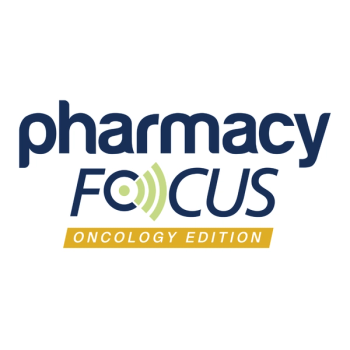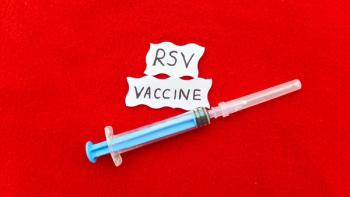Pharmacy Practice in Focus: Oncology
- October 2025
- Volume 7
- Issue 7
Current and Emerging BCMAxCD3 Bispecifics
Key Takeaways
- Bispecific antibodies have significantly advanced RRMM treatment, with teclistamab, elranatamab, and linvoseltamab showing promising efficacy.
- BCMA is a key target in RRMM, with high expression correlating to better responses to BCMA-directed therapies.
Precis
In the past 10 years, bispecific antibodies have revolutionized the treatment algorithm for relapsed or refractory multiple myeloma. To date, there are 3 BCMA-directed bispecific antibodies that treat RRMM: teclistamab, elranatamab, and linvoseltamab. Therapy sequence and distinctions among agents are a current clinical conundrum. Ongoing research focuses on drug differences, order of agents, managing resistance, and mitigating adverse effects to improve outcomes in multiple myeloma.
Key Takeaways
- B-cell maturation antigen (BCMA) is a protein found on the surface of nearly all multiple myeloma (MM) cells. It is an emerging target for relapsed or refractory MM (RRMM) treatment. Teclistamab and elranatamab have similar overall response rates (ORRs; 63% vs 61%) and median overall survival (mOS; 22.2 months vs 24.6 months) at 2+ years, with linvoseltamab’s early data reporting a better ORR (71%) and longer mOS (29.4 months) at 14.3 months. Major adverse effects of BCMA-bispecific antibodies (BsAbs) include cytokine release syndrome, immune effector cell–associated neurotoxicity syndrome, and an increased risk of infections.
- Future research with BCMA-directed BsAbs for MM should focus on sequencing in RRMM, potential use in frontline therapy, and the role in bridging therapy.
Introduction
One of the fastest-growing areas of cancer treatment in the past 10 years has been the development of bispecific antibodies (BsAbs). Having 2 distinct binding domains that attach to 2 epitopes simultaneously, BsAbs elicit multiple antitumor responses by building links between immune cells and cancer cells.1 BsAbs are unique in how they engage the immune system directly and bind to CD3 on T cells and a target epitope such as BCMA on malignant cells. Thus far in multiple myeloma (MM), BsAbs have been evaluated and approved for use in heavily pretreated, penta-refractory patients as a single-agent therapy. Since the first approval in 2022, BsAbs have played a role in improving the overall survival rate for relapsed or refractory MM (RRMM) patients, extending 5-year survival rates to more than 60%.2,3
What is BCMA?
B-cell maturation antigen (BCMA) is a membrane-bound protein found on the surface of nearly all MM cells. BCMA receptors are activated by ligands secreted from osteoclasts, stromal cells, and macrophages to trigger MM growth and survival. Upon activation, membrane-bound BCMA proteins undergo shedding to form soluble BCMA in the blood, which is potentially useful in disease prognosis and activity. One pitfall of soluble BCMA is that it could act as a decoy and decrease the binding affinity and therapeutic response of BCMA therapies.4,5 To date, BsAbs targeting membrane-bound BCMA have all achieved high response rates and deep remissions; however, the development of resistance is less understood. Higher BCMA expression in MM generally indicates a better response to BCMA BsAbs, but antigen expression is only 1 of many factors influencing clinical outcomes. Soluble BCMA could guide treatment decisions and determine treatment response and resistance as we learn more about BCMA-focused therapies. Currently, testing for soluble BCMA levels is not a standard recommendation for diagnosing or managing MM, leaving much more to be researched. To date, there are 3 FDA-approved BCMA bispecifics for MM that target membrane-bound BCMA for penta-refractory RRMM patients.6,7
BCMAxCD3 Agents
The first-in-class, dual-targeting BCMA and CD3 BsAb approved for MM in the United States was teclistamab (Tecvayli; Janssen Biotech, Inc) in October 2022. The MajesTEC-1 trial (NCT04557098),8 a phase 1/2 multinational study, looked at the efficacy and safety of teclistamab in patients with RRMM after exposure to at least an immunomodulatory agent, a proteasome inhibitor, and an anti-CD38 antibody. A total of 165 adults received once-weekly subcutaneous injections starting on day 7 at 1.5 mg/kg after 2 step-up doses of 0.06 mg/kg on day 1 and 0.3 mg/kg on day 4. There was an overall response rate (ORR) in nearly two-thirds of patients (63%), at 14.1 months when initially published and again at the 30.1-month follow-up. At 14.1 months, 39.4% of patients had a complete response (CR) or better, with deepened responses to 46.1% at 30.1 months. The median duration of response (mDOR) initially was 18.4 months and extended to 24 months with 30.1-month follow-up data. The same pattern was seen with both the median progression-free survival (mPFS) and the median overall survival (mOS), extending mPFS from 11.3 months to 11.4 months and mOS from 18.3 months to 22.2 months.9,10,11 Teclistamab’s approval in 2022 changed the landscape of RRMM treatment, ushering in myeloma-specific BsAbs.
Soon after teclistamab, elranatamab (Elrexfio; Pfizer Inc) was approved in August 2023, supported by data from the phase 2 study MagnetisMM-3 trial (NCT04649359).12 The multicenter, open-label, single-arm study evaluated the efficacy and safety of elranatamab in patients with RRMM with triple-class exposure, the same as the MajesTEC-1 trial. Elranatamab was administered like teclistamab with a step-up subcutaneous dosing strategy; however, it was flat dosed instead of being weight based. Two step-up doses were given starting at 12 mg on day 1, followed by 32 mg on day 4, transitioning to the maintenance dose of 76 mg once weekly starting on day 8. After 6 cycles, responders could transition to biweekly dosing, which at the time separated elranatamab from teclistamab. Initial data at 14.1 months showed an ORR of 63% with 39.4% of patients achieving CR or better. Follow-up data at 28.4 months showed an ORR of 61% of patients, with 37.4% achieving CR or better. mDOR had not been reached at 28.4 months; however, the probability of keeping a response at 24 months was 66.9% for all patients, with a rate of 71.5% for those in CR or better. mPFS and mOS were both reached at 28.4 months, reporting as 17.2 months and 24.6 months, respectively.8,13,14
Elranatamab came to market offering a flat-dose, less frequent option to teclistamab with similar treatment responses. For 2 years, teclistamab and elranatamab were the only BCMA MM BsAbs, and usage was often dictated by preference and availability. The third BCMA-directed bispecific, linvoseltamab (Lynozyfic; Regeneron), was approved in July 2025, offering an alternative to teclistamab and elranatamab. The LINKER-MM1 (NCT05137054)15 trial, which supported linvoseltamab’s approval, is an international, phase 1/2 trial looking at patients with triple-class refractory MM. The intravenous 200-mg maintenance dose showed efficacy, particularly in patients with high disease burdens and cytogenetic risks, at a median follow-up of 14.3 months. Once again with a 2-dose, flat-dose step-up strategy, day 1 begins with 5 mg, followed by 25 mg at day 8 with maintenance starting day 15 at 200 mg once weekly for 10 doses, transitioning to biweekly at week 14, with the possibility of transitioning to monthly if the patient achieved and maintained at least a very good partial response or better on or after receiving 17 doses of 200-mg maintenance. ORR was seen in 71% of patients, with 50% achieving a CR or better. mDOR was not reached for those who achieved a CR or better, along with mPFS, with hopes of seeing results with more follow-up data. What is unique about linvoseltamab is its intravenous route of administration, potential once-monthly dosing if maintaining a response, and response in those with high disease burdens and high cytogenetic risks. Most patients responded quickly, with the median time to first response in just under 1 month, making it even more exciting for linvoseltamab to come to market.16,17
Adverse Events
Two major adverse events (AEs) that all 3 BCMA bispecifics have in common are cytokine release syndrome (CRS) and immune effector cell–associated neurotoxicity syndrome (ICANS). All 3 medications hold a black box warning for CRS and ICANS and are available only through a Risk Evaluation and Mitigation Strategy program. CRS was more often seen with teclistamab and elranatamab (70%, 58.9%) vs linvoseltamab (46%), with the highest CRS grades seen when using teclistamab (5% vs <1%). For both teclistamab and elranatamab, time to onset and duration of CRS was 2 days vs 11 hours seen with linvoseltamab. Most CRS events occurred during the step-up dosing schedules for all 3 medications and resolved without treatment discontinuation.
Concerning ICANS rates, 6% of patients receiving teclistamab experienced ICANS, with only 1.8% being grade 3 or 4. Elranatamab exhibited similar ICANS rates; 3.6% of patients experienced ICANS, of which 1.1% were grade 3 or 4. Linvoseltamab had a similar percentage of patients experiencing ICANS to teclistamab (8%), albeit higher grade 3 or 4 incidences (2.6%). Time to ICANS onset for teclistamab was 4 days, with a median duration of 3 days, and for elranatamab, time to onset was 3 days with a median duration of 2 days. Linvoseltamab’s time to onset was much faster at 24 hours, but had a similar median duration of 2 days. ICANS was almost always seen in patients receiving step-up doses, similar with CRS, with almost all being lower grade 1 and 2, suggesting ICANS was generally mild and manageable.
One way to mitigate CRS and ICANS is a step-up dosing strategy, which all 3 medications employ. Inpatient admission is also recommended to help watch for CRS and ICANS, per the manufacturer. Hospitalization is recommended for 48 hours after all step-up doses and the first maintenance dose for teclistamab, 48 hours after step-up dose 1 and 24 hours after step-up dose 2 for elranatamab, and 24 hours after the first 2 step-up doses for linvoseltamab.10,13,16 Despite inpatient recommendations, many centers are looking to move administration to the outpatient setting. The International Myeloma Working Group recently published consensus guidelines and recommendations for optimal use of T-cell–engaging BsAbs. The guidelines emphasize that adequate cognitive status, reliable caregiver support, and reasonable proximity to the treating center are key patient selection criteria for outpatient administration. European centers and some in the United States have transitioned BsAbs to outpatient administration for certain patients who have met site-specific eligibility. Transitioning to outpatient administration aids with timeliness, decreased costs, and patient satisfaction. Ensuring proper monitoring is key, and after-hours protocols are in place for these patients if CRS and ICANS arise. As BsAbs become more commonly used and centers become more comfortable with their use, it is highly expected that these agents will take a more outpatient-focused approach.18 (Table 1).
When looking at other AEs, all 3 BsAbs had similar profiles, the most common being neutropenia, infections, and anemia. Table 2 cross-compares the drugs and their rates of each AE. A common trend across all 3 trials was a plateau of grade 3 and 4 incidences, aligning with extended interval dosing and overall drug tolerability. Another thought behind the plateau of infections is the increased use of intravenous immunoglobulin in MM patients, a mainstay for MM-associated hypogammaglobulinemia that was reported with long-term management, as well as the initiation of antibiotic prophylaxis.Linvoseltamab appears to be overall more tolerable than teclistamab and elranatamab; however, the risk of infection is still a main source of concern.9,10,11,13,14,16
Future Directions
With the advancements of T-cell–redirecting therapies for RRMM, sequencing is a pressing clinical need, as an optimal order is currently unknown. Bridging therapy (BT) with BsAbs before chimeric antigen receptor (CAR) T-cell therapy is becoming a more widespread practice in response to various factors. BsAbs have the advantage of being “off-the-shelf” and have an overall well-tolerated adverse effect profile, even with high burdens of disease, making BsAbs easy to administer to patients needing disease control. BT starts immediately after CAR T leukapheresis and concludes 2 weeks prior to lymphodepletion. One question behind BT and using T cell-redirecting therapies back-to-back is the role of T-cell exhaustion, which has been implicated as the main resistance mechanism behind long-term BsAbs exposure. Short therapeutic courses have been explored and show capabilities in disease reduction, all while being less T-cell exhaustive.
To complicate matters, BCMA is not the only target for MM BsAbs, adding to the already convoluted conundrum of CAR T or BsAbs first. If we are planning BT with BsAbs before CAR T, do we use different target products to prevent potential tolerance? Currently, The EBMT/EHA CAR-T Cell Handbook recommends BT for most patients between leukapheresis and CAR T lymphodepletion, with no differentiation between what therapy is used, except not using anti-BCMA targeting therapies in the case of BCMA-targeting CAR T cells.12 As more research is ongoing and different targeting CAR-T products are approved, the space with BCMA BsAbs is rapidly evolving and changing. To date, the most common strategy is a BCMA-directed CAR T before BCMA BsAbs if disease burden can be reduced and kept long enough to present to CAR-T therapy. BT with different targeted BsAbs is a commonly accepted practice to prevent T-cell exhaustion; however, if patients progress through CAR T, a BCMA-directed BsAbs is a potential treatment.19,20,21
Conclusion
Teclistamab, elranatamab, and linvoseltamab are the 3 FDA-approved BCMA-directed bispecific therapies for RRMM. Decisions for product selection currently come down to provider preference, patient preference, and hospital formulary preferences. Linvoseltamab was approved in July 2025 and has the most favorable data to date, including a flexible dosing strategy, intravenous administration, a favorable adverse event profile, and efficacy in high-risk populations. Despite its exciting data, linvoseltamab lacks real-world experience, unlike teclistamab and elranatamab. With a larger push for outpatient BsAbs administration, providers look to teclistamab and elranatamab to keep patients out of the hospital, using different administration and management strategies that have been tested and proven effective (Table 3). Despite the lack of head-to-head trials, the dawning of BCMA-directed BsAbs is a significant breakthrough in MM treatment for those in the R/R setting. Only time will tell their distinctions and sequence in therapy based upon real-world data and ongoing clinical trials. Finding the best sequence of agents and the mechanism of failure will be critical to maximizing deep disease remission and extending median survival.
REFERENCES
Bispecific antibodies: an area of research and clinical applications. News release. FDA. February 14, 2024. Accessed August 14, 2025.
https://www.fda.gov/drugs/spotlight-cder-science/bispecific-antibodies-area-research-and-clinical-applications Turesson I, Bjorkholm M, Blimark CH, Kristinsson S, Velez R, Landgren O. Rapidly changing myeloma epidemiology in the general population: increased incidence, older patients, and longer survival.Eur J Haematol. 2018;101(2):237-244. doi:10.1111/ejh.13083
What is multiple myeloma? Multiple Myeloma Research Foundation. Accessed August 14, 2025.
https://themmrf.org/multiple-myeloma/#:~:text=Symptoms%20of%20Multiple%20Myeloma,decreased%20ability%20to%20fight%20infection Shah N, Chari A, Scott E, Mezzi K, Usmani SZ. B-cell maturation antigen (BCMA) in multiple myeloma: rationale for targeting and current therapeutic approaches.Leukemia. 2020;34(4):985-1005. doi:10.1038/s41375-020-0734-z
Wiedemann A, Szita VR, Horvath R, et al. Al. Soluble B-cell maturation antigen as a monitoring marker for multiple myeloma. Pathol Oncol Res. 2023;29;1611171. doi:10.3389/pore.2023.1611171
Girgis S, Lin S, Pillarisetti K, et al. Effects of teclistamab and talquetamab on soluble BCMA levels in patients with relapsed/refractory multiple myeloma. Blood Adv. 2023;7(4):644-648. doi:10.1182/bloodadvances.2022007625
Costa BA, Ortiz RJ, Lesokhin AM, Richter J. Soluble B-cell maturation antigen in multiple myeloma. American Journal of Hematology. 2024;99(4):727-738. doi:10.1002/ajh.27225
A study of teclistamab in participants with relapsed or refractory multiple myeloma (MajesTEC-1). Updated August 17, 2025. Accessed August 18. 2025.
https://clinicaltrials.gov/study/NCT04557098 Firestone R, Lesokhin AM, Usmani SZ. An embarrassment of riches: three FDA-approved bispecific antibodies for relapsed refractory multiple myeloma. Blood Cancer Discov. 2023;4(6):433-436.doi:10.1158/2643-3230.BCD-23-0176
Moreau P, Garfall AL, van de Donk NWCJ, et al. Teclistamab in relapsed or refractory multiple myeloma. N Engl J Med. 2022;387(6):495-505. doi:10.1056/nejmoa2203478
Garfall AL, Nooka AK, NWCJ van de Donk, et al. Long-term follow-up from the phase 1/2 MajesTEC-1 trial of teclistamab in patients with relapsed/refractory multiple myeloma. JCO. 2024;42(suppl 16):7540-7540. doi:10.1200/jco.2024.42.16_suppl.7540
MagnetisMM-3: study of elranatamab (PF-06863135) monotherapy in participants with multiple myeloma who are refractory to at least one PI, one IMiD and one anti-CD38 mAb. Updated January 27, 2025. Accessed August 18, 2025.
https://www.clinicaltrials.gov/study/NCT04649359 Lesokhin AM, Tomasson MH, Arnuf B, et al. Elranatamab in relapsed or refractory multiple myeloma: phase 2 MagnetisMM-3 trial results. Nat Med. 2023;29(9):2259-2267. doi:10.1038/s41591-023-02528-9
Tomasson MH, Iida S, Niesvizky R, et al. Long‐term survival and safety of elranatamab in patients with relapsed or refractory multiple myeloma: update from the MagnetisMM‐3 study. HemaSphere. 2024;8(7). doi:10.1002/hem3.136
A study to examine the effects of novel therapy linvoseltamab in combination with other cancer treatments for adult patients with multiple myeloma that is resistant to current standard of care treatments. Updated July 31, 2025. Accessed August 18, 2025.
https://www.clinicaltrials.gov/study/NCT05137054 Bumma N, Richter J, Jagannath S, et al. Linvoseltamab for treatment of relapsed/refractory multiple myeloma. JCO. 2024;42(22):2702-2712. doi:10.1200/JCO.24.0100
Caffrey M. LINKER-MM1: updated data show 46% complete responses to linvoseltamab at 11 months in R/R multiple myeloma. Evidence-Based Oncology. December 22, 2023. Accessed August 21, 2025. https://www.ajmc.com/view/linker-mm1-updated-data-show-46-compete-responses-to-linvoseltamab-at-11-months-in-r-r-multiple-myeloma
Rodriguez-Otero P, Usmani S, Cohen A, et al. International Myeloma Working Group immunotherapy committee consensus guidelines and recommendations for optimal use of T-cell-engaging bispecific antibodies in multiple myeloma.Lancet Oncol. 2024;25(5):e.205-e216. doi:10.1016/S1470-2045(24)00043-3
Fandrei D, Seiffert S, Rade M, et al. Bispecific antibodies bridging to BCMA CAR-T cell therapy for relapsed / refractory multiple myeloma. Blood Cancer Discov. 2025;6(1):38-54. doi:10.1158/2643-3230.BCD-24-0118
Manier S, Jurczyszyn, Vesole DH. Bridging chemotherapy: multiple myeloma. In: Kroger N, Gribben J, Chabannon C, et al, eds. The EBMT/EHA CAR-T Cell Handbook. Springer; 2022:Chapter 24.
Verma A. How to sequence CAR T-cell therapy and bispecific antibodies in relapsed/refractory multiple myeloma. Multiple Myeloma Hub. August 12, 2024. Accessed August 14, 2025.
https://multiplemyelomahub.com/medical-information/symposium-or-how-to-sequence-car-t-cell-therapy-and-bispecific-antibodies-in-relapsedrefractory-multiple-myeloma
Articles in this issue
about 1 month ago
Accelerated Approval of Cancer Drugs: Benefit or Burden?about 1 month ago
Axatilimab: A New Frontier for Steroid-Refractory Chronic GVHDabout 2 months ago
Operationalizing Epcoritamab-GemOx in Practice: A Focus on EPCORE NHL-2about 2 months ago
Amivantamab for EGFR-Mutated Metastatic Non–Small Cell Lung Cancerabout 2 months ago
Believe: Lessons From Ted Lasso for Oncology Pharmacy PracticeNewsletter
Stay informed on drug updates, treatment guidelines, and pharmacy practice trends—subscribe to Pharmacy Times for weekly clinical insights.





















































































































































































































